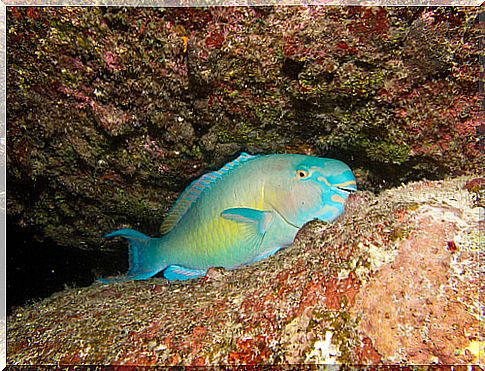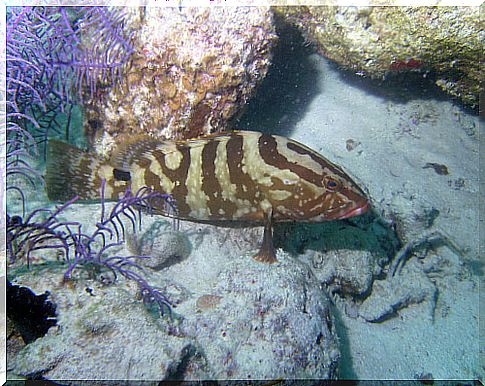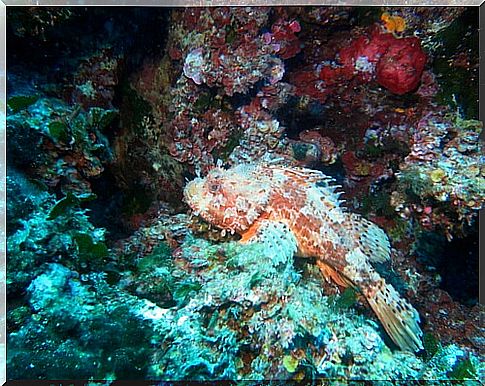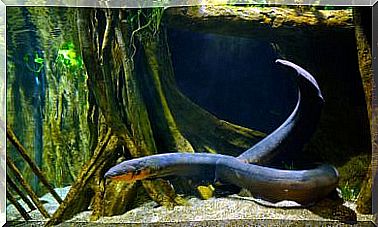Rest In Fish: Sleeping With One Eye Open

Resting in fish is a subject for which little data is known, and the question often arises as to whether fish can sleep. The short answer is yes, and that is that most fish sleep. Given the fact that most fish do not have eyelids, they do not close their eyes when sleeping as mammals do.
The Role of Rest in Fish
Various scientific investigations have shown that fish sleep has a restorative and energy-saving function. Fish rest indistinctly day and night. Now, rest in fish works differently than in higher vertebrates.
Fish, even in a resting state, remain alert to danger. We can say that fish have learned to sleep with one eye ‘open’.
As in everything, there are exceptions. For example, the Spanish big fish ( Bodianus rufus ) sleeps so soundly that you can lift it to the surface of the water, before eliciting a response.
Another curious example is illustrated by some species of parrotfish, which raise their own ‘mosquito net’ of mucus to protect themselves from parasites, prevent predators and be able to sleep in peace.

Sleep is a universal phenomenon
It is universally accepted that cyclical sleep-activity transitions are subject to brain control mechanisms. Although there is no doubt that rest is essential for the body’s physiological balance, the specific mechanisms by which sleep acts on physiology have not been revealed.
Evolutionary studies show that cold-blooded animals do not exhibit true sleep-wake cycles. In these there are cyclical transitions between rest and activity that are determined by environmental factors.
Until now, experts have carried out EEG analyzes on animals that lack a developed cerebral cortex – such as turtles, lizards and fish – without being able to find any pattern of brain activity that could be associated with the resting state.
Sleep as an image processor
Scientific studies have shown that brain activity for processing visual information is greater than that for processing other modalities of sensory information.
It has been postulated that in primitive times non-sleeping animals developed complex behaviors that required great visual capacity. The processing of this information began to saturate the neuronal capacity in wakefulness and, consequently, the sleep-activity cycles would develop. Thus, sleep may have evolved as a mechanism to ‘reset’ brain circuits.

Insomniac fish
Scientists have a theory that fish that do not sleep do not need it, because they do not have to process visual information. In accordance with this theory, blind fish that live in caves in the deep sea never sleep.
Other insomniac fish that do have focal vision, such as tuna and shark, live in open-water ocean habitats, with very few visual features to record. As a result, your brain, collecting little visual data, needs no rest to process it.
How to recognize rest in fish
- The fish rest at night or during the day indistinctly. In certain species it is usual that they look for rocks or plants to rest protected.
- It is common for them to put the rear or lower fin on the seabed. Thus, the fin acts as a kind of anchor, which prevents the sea current from dragging them.
- It may happen that the fish emit noises to ward off predators. This is the case of the grunt fish.
- They can rest on the seabed. From there they go up periodically to breathe without having to wake up; They do this thanks to the swim bladder.
- Some species of fish are capable of changing the color of their scales when sleeping, so as not to be so conspicuous to possible enemies during sleep.
Sleep is such a complex process that it must necessarily fulfill a vital function. If at some point in evolution, sleep was an option, history shows us the advantage of sleeping, since the animals that sleep prevail in nature.









